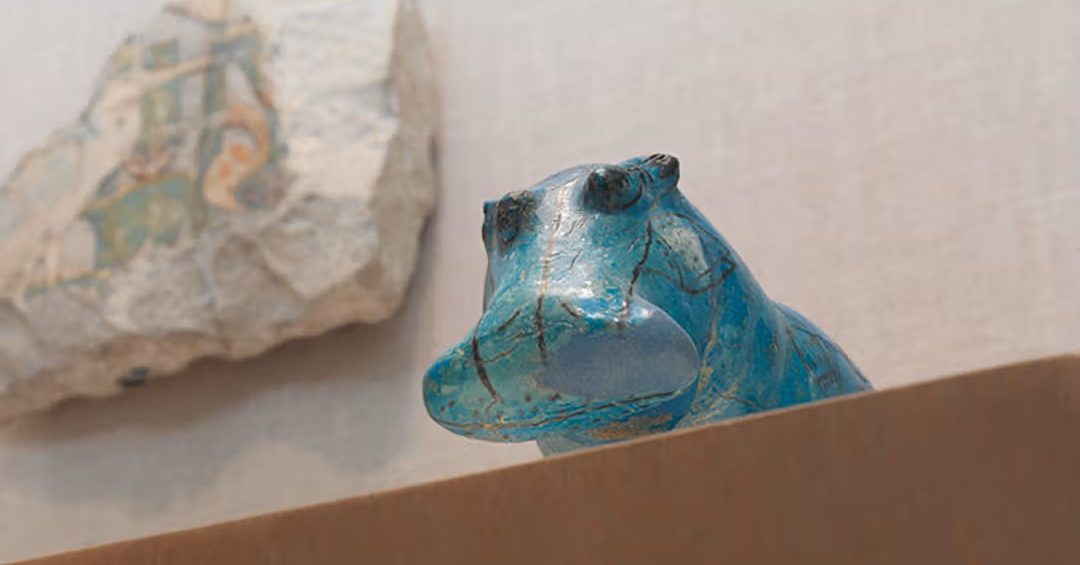Much like cats, crocodiles, and lions, the hippopotamus was a revered animal in ancient Egyptian culture, as it represents fertility and strength, while simultaneously being feared for the danger it posed to those living along the Nile. Among ancient Egypt’s many hippopotamus figures and drawings, the small blue hippopotamus figurine of “William the Hippo” stands out for its turquoise blue hues and is famous worldwide. William the Hippo The figurine, dating back to the Middle Kingdom, around 1961–1878 BCE, during the reigns of Senusret I or Amenemhat II, was found during an excavation in 1910 and became a part of the Metropolitan Museum of Art in 1917 and the museum’s unofficial mascot. The hippo was originally found in a tomb, where it was placed to work its magic and protect the dead in the afterlife. Its perceived spiritual powers travel time and space. In 1931, author H. M. Raleigh published an article about his family’s fondness for a framed color print of the Metropolitan Museum of Art’s hippo in their home. They admired the hippo, believed in its wisdom, consulted it on important decisions, and affectionately named it William. According…



